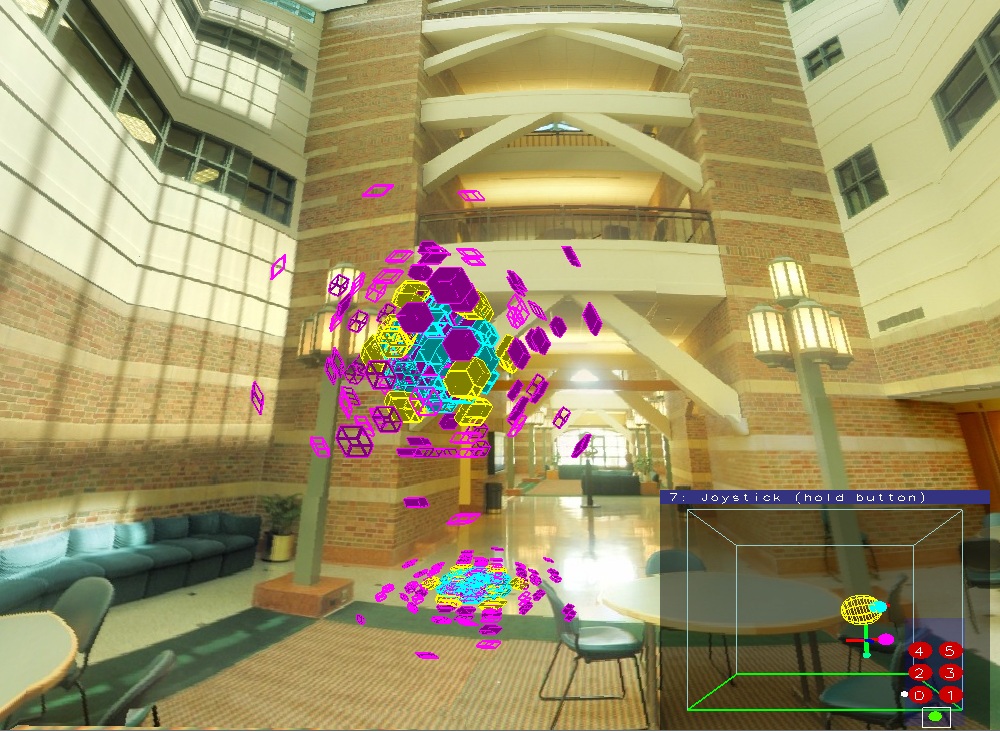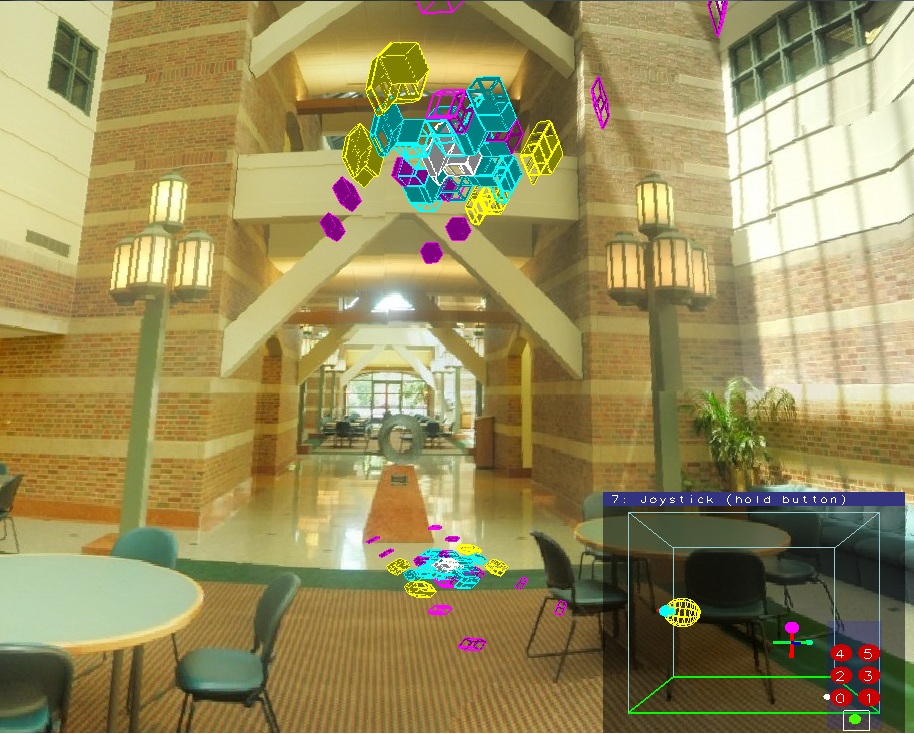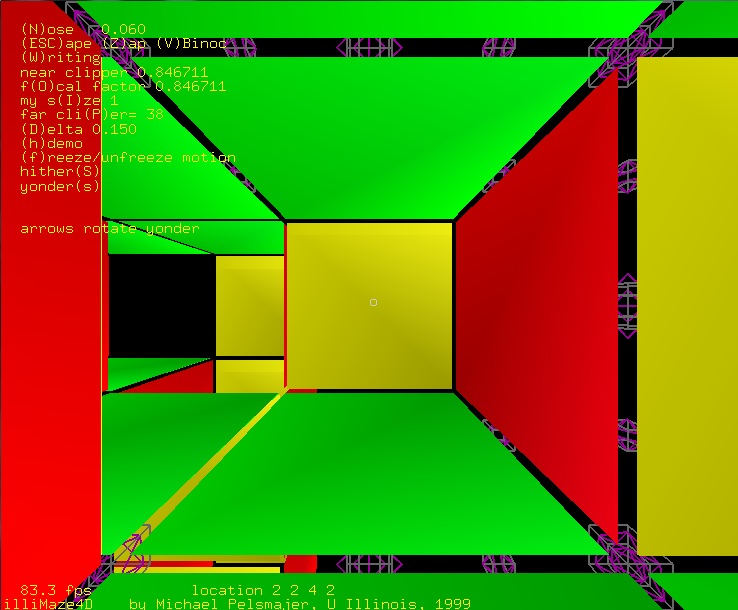Justin Schirle
Mathematics Department, University of Illinois



Abstract




Abstract


DeBruijn proposed two methods for realizing quasicrystals as projections of sub-lattices of the 6D unit lattice into 3-space. In this collaboration with mathematical
artist, Tony Robbin, DeBruijn dual method is used to
create real-time interactive CUBE animations (RTICA). My project worked to implement a skybox as well as changing the movement of the drop shadow. I also worked on putting the Pelsmajer 4 Dimensional Maze into syzygy and the CUBE.
My Work
Going into this REU, I knew very little programming, so much of the first few weeks was spent learning Python and OpenGL. One particulary helpful resource was the Stan Blank's tutorial on PyOpenGL, which can be found here This provides a good basis for programming in Python in html, with many example programs included.
Much of my work was on the quasicrystal. A quasicrystal is a ordered crystal structure that is nonperiodic, although it is infinite, it lacks any translational symmetry.
For the program, I began trying to implement a skybox to the original program, with the Beckman Institute set as the backdrop. The idea for this came from a quasicrystal structure designed by Tony Robbin. The crystals were completed in 1994 and were hung in the Danish Technical University. The sun shining through the skylight would then create a penrose tiling shadow on the floor. Unfortunately, this piece or art was destroyed in 2003.
 I then created a skybox for the quasicrystals in python. My methods for doing so in any pyCUBE program are in included (.pdf and .tex ). This also includes some information on using textures in PyOpenGL, since there is surprisingly little documentation on this subject online. I was able to place a skybox of Beckman into the program, however I had difficulty in getting the pictures used to mesh together nicely, due to a lack of knowledge on image editing and manipulation.
I also added a skybox to the Python Skeleton program.
I then created a skybox for the quasicrystals in python. My methods for doing so in any pyCUBE program are in included (.pdf and .tex ). This also includes some information on using textures in PyOpenGL, since there is surprisingly little documentation on this subject online. I was able to place a skybox of Beckman into the program, however I had difficulty in getting the pictures used to mesh together nicely, due to a lack of knowledge on image editing and manipulation.
I also added a skybox to the Python Skeleton program.
The other major change made to the quasicrystal program was the behavior of the drop-shadow. The intent of the shadow is to simulate the shadow that would occur if the quasicrystals were hung beneath a skylight, so the shadow should move as the sun passes overhead. Previously, when one navigated the quasicrystal, the shadow would not behave appropriately. This was fixed so that the shadow would always stay in one X-Z plane, meaning it now will always stay on the ground. This makes it now possible to "hang" the quasicrystals.

At the end of the summer, I also briefly worked on Pelsmajer's 4 Dimensional Maze. This was originally a CAVE application by Michael Pelsmajer, and we worked on adapting it into the CUBE. It currently compiles and runs in the CUBE, however not all features in the original program are functioning in the CUBE, so there is still work to be done on this project.